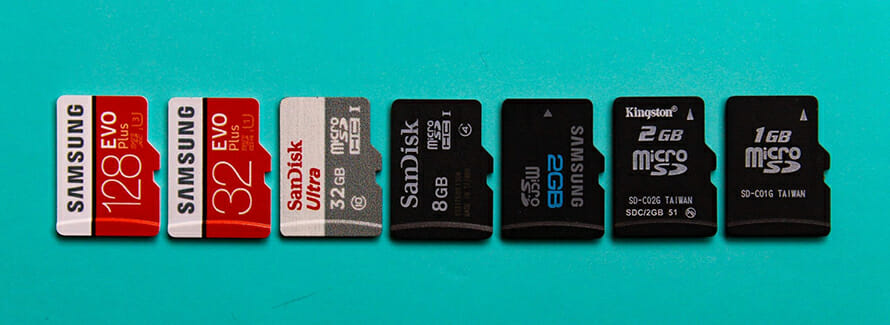FAT32 vs exFAT vs NTFS: What’s the Difference?

Organizing our files is one thing, but preserving them another, completely. There have probably been instances of plugging in a flash drive into a Windows system, to realize that the Windows system sees it as corrupt. Track back to your Linux system and everything is working properly. Is the Windows system at fault? Partly, but due to a difference in file systems and how other systems write files.
The most common way to format a flash drive used to be FAT32, but with drive capacity exceeding 1TB, there was a need for a new file system that could leverage larger files and handle larger capacities, NTFS was created by Microsoft.
This was in 1993 and to this day, there is still confusion around file systems. Following is an explanation of various file systems, with a strong focus on FAT32, NTFS and exFAT.
NTFS vs FAT32 vs exFAT – The Main Differences and Similarities
The first thing to establish is what a file system is. It is often referred to as an fs, which is short for “file system”. File systems are methods of data management that operating systems use to write and store data.
File systems separate data into pieces and give it name and a location. Without a file system, data would be one big chunk of numbers. The computer would be able to tell where one piece ends and another starts.
File systems are necessary for our data to be safely stored and for us to be able to access it. Additionally, operating systems use file systems to read and write data and communicate with other operating systems.
FAT32, exFAT and NTFS were created by Microsoft, but there are differences between them.
FAT32
FAT32 was developed in 1996, after FAT16 couldn’t satisfy the growing standards of storage size. FAT16 had 9 years of service up to that point, but the cluster sizes were too small, so they were expanded to 32-bit cluster sizes. This would satisfy the world of Microsoft products for another ten years, as well as other types of storage, such as flash drives.
Once the 2000s came, FAT32 was becoming difficult for power users, because files upwards of 4GB could not be stored as a single file, as well as various other limitations.
exFAT
exFAT was created in 2006, with a specialized use for flash drives. Capacity was increasing and file sizes exceeded 4GB at the time, meaning that there was a need for another file system to be widely used as a standard for removable storage.
exFAT stands for extensible file allocation table and is an fs used by SD and SDXC cards as a standardized format, readable across a variety of operating systems. It is also the most desirable file format for modern external SSDs, especially those which will be used on different computers/systems.

The various SD cards shown here will have an exFAT file system.
NTFS
NTFS stands for New Technology File System and is much older than one would assume, given that it is the only system that modern Windows can be installed on. It was created in 1993, and has been the default file system for every Windows since NT 3.1.
NTFS has had multiple iterations over its lifespan, but is essentially a journaling file system with various security, compression and encryption capabilities. NTFS is proprietary, but can be read and written on by other systems such as Linux and BSD, but not macOS.
There are third-party NTFS drivers for macOS systems, but they are a premium feature. The Linux and BSD drivers are open source and work out of the box on most modern systems.
FAT32 vs exFAT – The Differences
There are a plethora of differences between exFAT and FAT32, the first that comes to mind being the file size and capacity. exFAT is much better at handling larger file sizes and capacities. exFAT is also the standard for modern, large flash drives, as well as SD cards.
FAT32, on the other hand, can be understood by many systems, including old and obscure embedded systems. FAT32 is still used as the preferred file system when updating a BIOS on a motherboard.
FAT32 needs less space on the target system to be readable, making it the perfect solution for embedded systems and small devices which do not have a lot of computation power or storage capacity.
exFAT vs FAT32 comes down to the use case, where the first is better for larger drives and more modern units and the second for smaller drives and older devices.
NTFS vs FAT32 – The Windows Systems
NTFS is a file system that was designed to work with a lot of overhead, which makes it a pretty bad solution for devices which do not have a lot of power and capacity. However, NTFS is essential because it hosts all Windows systems from XP until today.
NTFS has limitations because it can only be accessed through specific drivers, which are present on Linux and BSD systems, but not natively on Mac systems.
FAT32 can be understood by most computers, small or large, as well as operating systems. FAT32 has file size and overall storage limitations but has the added benefits of being accessible by most computers.
FAT32 vs NTFS boils down to whether you are using a drive to install Windows on, or you want the drive to be readable on most systems and plan on only transporting smaller files, up to 4GB.
There Are Other File Systems – ext4, BTRFS, ZFS, APFS
There are so many file systems in general, not just the ones that were made by companies other than Microsoft. Four come to mind and they are BTRFS, ZFS, ext4 and APFS.
BTRFS stands for b-tree fs or colloquially better fs, and is a file system originally developed by Oracle. BTRFS is a great file system for file storage and is available on open source systems like Linux and BSD.
ZFS is another file system, but also a volume manager, a system designed with the idea of storing data and always checking its integrity. It is the go-to solution for long-term storage and RAID solutions.
Ext4 is the fourth generation of the ext file system, typically used for Linux and its many distributions. It is a journaling file system like NTFS but different in its approach. It is open-source and usable on most operating systems.
APFS stands for Apple File System and is what modern macs run on. It is a continuation of HPS+, another Apple file system.
Conclusion and Summary
All three Microsoft file systems mentioned above have their limitations and features, which will be summarized below.
| FAT32 | exFAT | NTFS | |
|---|---|---|---|
| Overview | An old file system, introduced with Windows 95, used to increase storage limits at the time. | A file system built for modern flash drives and removable storage. | A more advanced file system |
| Storage Capacity | 4GB files and a theoretical limit of 2-16TB | Extremely large | Extremely large |
| Use Case | Older systems and flash drives which require | Modern flash drives, external drives and SD cards. | To host a Windows installation. |
| Features | High performance on low volumes | High overall performance Some minimal security Possible fault tolerance | High performance on large volumes and vice versa Built-in security Great disk economy Great fault tolerance |
Each of the Windows file systems has their use cases. FAT32 is great for older devices and general compatibility. exFAT is a successor to that compatibility, but with added file size and overall capacity. NTFS is a must-have if one wants to use Windows.
There are additional file systems, more appropriate for other operating systems, but most of them are best left explained as a separate topic.